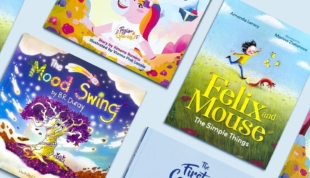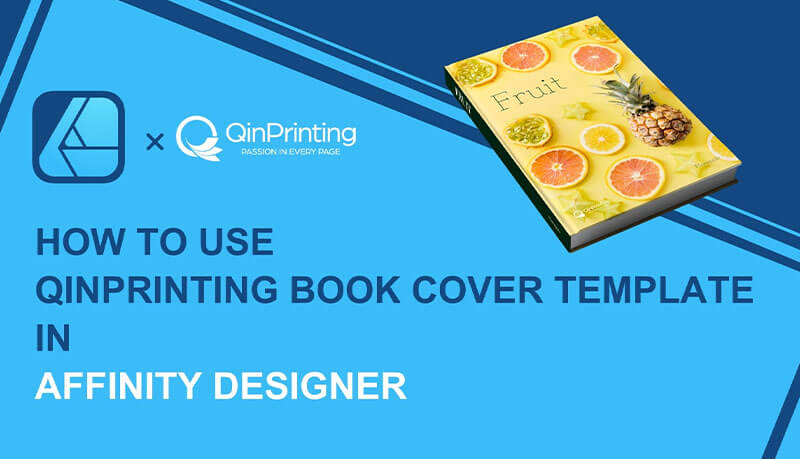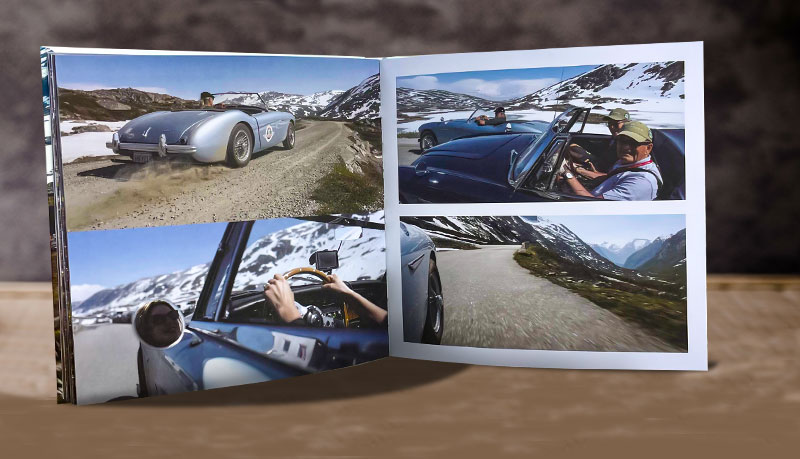A complete guide to writing and self-publishing books aimed at children and early teens, with practical advice on getting ideas, structuring your story, illustrations, and printing.
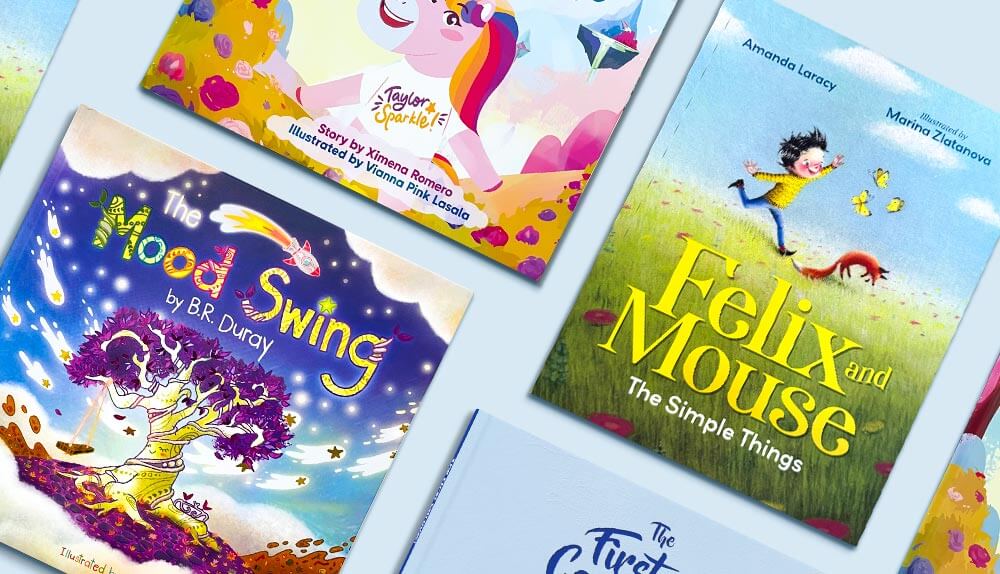
The challenge of writing well for children and teens
Any traditional children's book editor will tell you in exasperated tones how frequently aspiring writers say they want to write for children because they think it will be easier than writing for adults. Nothing could be further from the truth. Writing for children and teens is at least as challenging as writing for any other demographic. Good children's writers are good writers, period. This is a reality you must take seriously if you want to learn how to write and self-publish books for the juvenile market.
Have a look at these five reasons aspiring writers often give for trying to write for the juvenile market:
- Articles and features for children are shorter and easier to write
- You were a child once, so you already understand the market
- As a children's writer, you can teach them better morals and behavior
- You can crank out a lot of work fast and make money easier
- Most of your other books haven't done so well, so you think you'll try writing for children instead
If you think any of the above are good reasons to write for children, you should forget about it. Content for the juvenile market must be of the highest quality to have a chance of making sales — and that's as true for self-publishers and indie authors as it is in the mainstream. We work with both, so we know what we're talking about! The subject must be well targeted, the angle fresh and original, and the prose tightly crafted.
While you shouldn't be put off writing and self-publishing books for the juvenile market, you must recognize that it's challenging and demands not only enthusiasm but a particular set of skills. If you have a passion for writing for children and teens, you can learn the skills that you need to do it well. But if you're thinking of writing for the juvenile market because you imagine it will be easy, you will only be disappointed.
In this post you'll learn:
- The skills you need to be a successful children's writer
- What parents, teachers, librarians, and others—who mostly buy the books that children read—look for in children's and teens' books
- How to research the market to find the best themes, styles, lengths, and genres to inform your work
- How to choose who and what to write about for children and teens
- What style, tone, and language to use when writing for kids and young people
- How to organize and structure your process, market, promote, and sell your books
If you think you have what it takes, a career writing for children and teens can be as rewarding — both personally and financially — as it is challenging. Still keen? Let's examine the knowledge and skills you'll need to be a successful self-published children's writer.
The skills you need to write for the juvenile market
Besides the basic abilities all fiction writers need — a creative imagination, self-discipline, a good command of grammar, excellent research skills, and a talent for communicating ideas and feelings in written form — a children's writer must fulfill a specific set of conditions.
- You must have a natural empathy with children, particularly of the age group you aim to write for — ideally, you'll have daily contact with children, not only within your family, but through school or work.
- While as an indie you will not be able to write stories about licensed characters — well-known protagonists of books, TV series, movies, or cartoons — it is essential to have a wide familiarity with these characters in order to understand current trends in juvenile popular culture and properly target your work. What was popular when you were a kid may not pass muster today.
- You need an unsentimental, realistic understanding of children's needs, experiences, thoughts, and feelings to entertain, educate, and inform them through your writing.
- Without being “wacky” and “zany” all the time, you need a snappy, attention-grabbing writing style that will captivate and entertain young readers.
- Last but far from least, you should read — and enjoy — articles, short stories, and books written for the age group for which you want to write. Lots. Lots and lots. Lots and lots and lots. And take notes.
Most of these factors can be learned or developed if you don't have them already, or the gaps filled in by thorough research. If you're keen to write for young people, make a start and be ready to learn on the job. But if there's one essential skill that you can't learn, it's a passion for delivering the best quality writing to children. You can write well for several markets — business, technical, marketing, self-help, for example — even if the subject matter doesn't stir your soul. But to write well for children, you must really care.
What buyers in the juvenile market look for from books
The number of books of every kind and description for kids and teens is bigger than you might think before you begin researching the market. They range from comic books, general knowledge, history books, science, and nature, to pop culture, fashion, music, crafts, fantasy, science fiction, school stories, board books, picture books, pop-up books, and more. But when you're thinking about defining which sector of the juvenile market you're aiming for, you should consider these three basic categories:
- Fiction – long-form and short-form stories for youngsters can cover almost the same range of topics and genres as those for grown-ups, bar certain obvious exceptions such as steamy romance! So, for example, school stories, family stories, fantasy adventures, science fiction, crime and mystery, humor, and even romance, if you do it right, are all good options.
- Age groups – the category “children” is very broad. So, you'll need to narrow down your scope to a given age range and recognize that their interests will change based on how old they are and even what sex or gender they may be. Either way, to give your writing focus, and help with marketing your self-published book, catering to a specific interest or age group is an excellent, even essential, place to start.
- Children's and teen editions of more mainstream genres. If you're transitioning from writing to adults to trying your hand at writing for children or teens, then you may be able to work within the same genre to which you are already accustomed. Just make sure that your plot lines and language, and the overall length of your book, are age-appropriate. Kids can enjoy thrillers and science fiction, fantasy and even crime, just as well as adults, if it's written specifically for them.
But you needn't restrict yourself to fiction titles. Books written for children and teens can cover a vast range of non-fiction options, too. Think of history, science, nature, hobbies, sports, unsolved mysteries, art, and more. These markets are often overlooked by freelance children's writers, who tend to think first of writing a story, but they can be easier to put together and often sell really well. It's always worth exploring all the possibilities before you make up your mind.
As we've already noted, you can't write for “all children”. One of the most useful ways to narrow your market is by age group or school year. It's handy, too, because it's also the core method that many parents and certainly teachers, librarians, and booksellers use. So, let's look at how you can categorize your book by the age group of the target audience. A book aimed at kids still in kindergarten or 1st grade will need subjects and treatments very different from a book website targeting freshmen, sophomores, or seniors. While you must do your due diligence and research, each market sector to understand what ideas might work, here's what generally fits well in the different age groups:
- Pre-kindergarten to 1st-grade books are often focused on strong characters and tend toward heavily illustrated, full-color pages based around very short stories (200 to 300 words) written in age-appropriate vocabulary. As these books are for preschoolers, remember that the stories will be read aloud by the children's parents or other adults. You might also focus on educational material and picture-strips.
- 1st grade to 4th grade books may focus on either boys, girls, or both sexes. Many authors targeting this demographic write short novels known as “chapter books” often accompanied by illustrations. You can also write about anything that may be of interest, from famous personalities, TV shows, and pop music, to hobbies, news, sports, quizzes, comic strips, and “things to do” manuals.
- 4th through 7th-grade books are largely aimed at girls, although several indie authors manage to cater for both sexes. The publishing industry identifies this demographic as “pre-teen” and you'll find a wider range of subjects of interest to the age group.
- 8th-grade through Senior books cater to both ends of the teenage market and everything in-between. In this market, if you're thinking of non-fiction, look for ideas based on beauty tips, music, style, and fashion, and love and relationships (including sex.) At the older end of this category, books may be almost indistinguishable from mainstream adult publications.
These categories are not carved in stone. You should also be aware that many young people “read up” above their age with great curiosity as they try to understand what's in store as they grow and develop. So, for example, if you write a book that deals with sex and relationships with one of the older age groups, you should take into account the younger children reading it and use tact and well-chosen vocabulary. But each book buyer has their specific needs and acquisition policies in institutions such as libraries often change, as do fashions among parents and teachers, so you must always research the market before you settle down to write a book for children of any age.
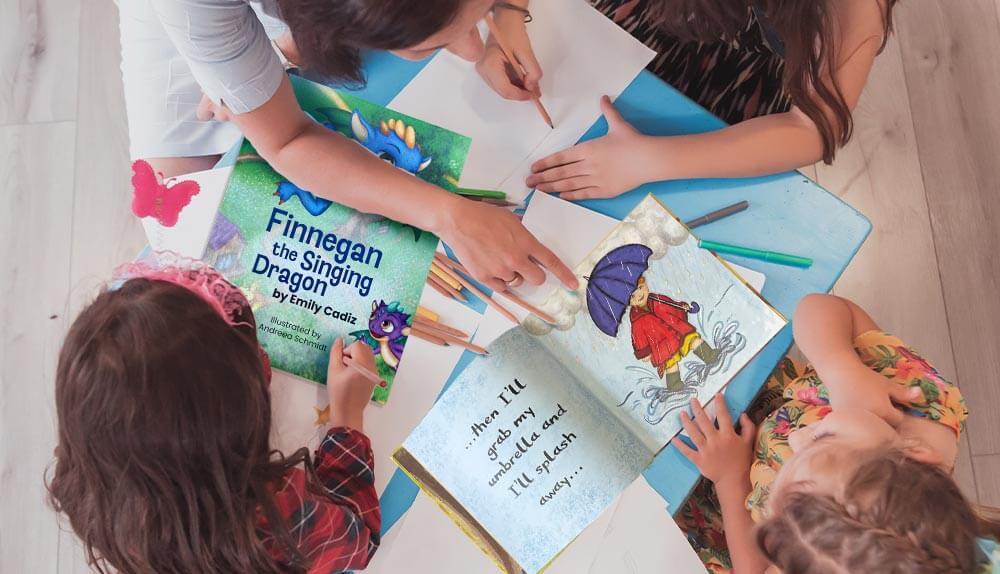
How to research children's and teen markets
Market research is a vital aspect of writing for children. In short, those who thoroughly research the markets before writing and marketing their self-published books have a much higher success rate in terms of positive reviews and sales than those who don't. Market research isn't an “optional extra” for the successful indie writer; it's the foundation of success. However, there are certain aspects of research which are particularly pertinent to the children's and teen markets.
Once you've completed your first round of research and selected an age group and possibly gender you'd like to write for, then you must read and examine a handful of recent bestselling and popular books in that demographic Read critically with the aim of understanding the “nuts and bolts” of why those books are appropriate for that group and why they have done so well. Ask yourself the following questions and note down the answers:
- What writing style does the author use? Is it conversational, upbeat, measured, zany, educational, or confidential in tone?
- What age range are the readers, do you think?
- From the characters and the storyline (if it's a fiction book) can you work out a good idea of the sex, interests, and socio-economic status of the readers? Are the characters intended to reflect the readers' experience or are they aspirational or purely fantastical in conception and treatment?
- Is there a clear “world view” expressed within the book? How does it approach issues of gender, race, identity? Or does it avoid ‘issues” altogether and focus purely on adventure, humor, or entertainment?
- What ideas can you think of that would be a “good fit” for the audience who enjoys the book you're analyzing?
At the end of the research phase, you should have a clear image of the “ideal reader” of the for whom you wish to write. You should also have a good understanding of the “voice” you need to write in — style, tone, vocabulary, sentence length and structure — and a sense of what topics and treatments appeal to that demographic Equipped with the results of a detailed market analysis, you're in a strong position to formulate an idea for a book which is more likely to sell.
How to choose a subject to write about
Your research should have stimulated several good ideas for what to write about in a given market. You will also know what has recently been published, so you don't waste time and effort on a story that's already been covered—although you may also decide that there's room for one more schoolboy wizard story or another teen vampire saga! When you're deciding what to write, ask yourself the following questions:
- What age group is it aimed at?
- Is the book aimed at boys, girls, or both?
- Why will the subject interest the readers I'm thinking of?
- What's the word count?
- Can you either tell the story well or do the subject justice in the available space?
- Is your subject a good match for the style and tone of the other books already doing well?
Once you've answered these questions and settled on an idea that seems to be a good fit, you can either write it up or develop your outline depending on the way you work. Some writers dive straight in and keep going until they get to the end. Others like to plan everything meticulously first before they set “pen to paper” (or more likely, fingers to keyboard). These two types are often referred to as “pantsers”—because they ‘write by the seat of their pants”—and “planners”, for reasons more obvious!
Getting the language right when writing for children and teens
Again, each sub-demographic of the catch-all group “children” has its specific needs, so you'll need to be guided by your market research. But there are several universal principles you need to understand if you want to write well for children. Study these carefully before you put pen to paper or your fingers on the keyboard.
- Make sure the vocabulary and sentence structure are age appropriate. By studying published work for the age group you're targeting, you should get a good idea of the language to use. You might also find an application such as the Hemingway Editor useful. It's a simple word processor, which allows you to set the reading level before you write. It analyzes your writing and makes suggestions about phrasing, reading difficulty, vocabulary, and sentence length.
- Avoid slang and “teen talk.” In some rare cases, it may be fine to use a few slang expressions, particularly in story dialogue. But as a general rule, you should avoid it. Slang and teen talk change rapidly, and what may be “in” today could be outdated tomorrow. It also tends to be specific to a group or locality and risks excluding readers who do not belong.
- Avoid “talking down” to your readers. One of the most common errors made when writing for children is to use what you imagine is an age-appropriate tone — usually a sort of “sing song” voice — which in fact comes across as “dumbed down” and condescending. You need only write concise, clear prose to make your work accessible to a young audience. And if a kid has to look one or two of your words up in the dictionary, there's no harm in that!
If you follow these rules, you'll be off to a flying start. It should go without saying that you should respect your audience's intelligence and avoid the trap of adult arrogance or moralizing when writing for younger readers. Many of the world's best children's writers advise that you shouldn't “write for children” at all — you should just write. It's advice worth remembering.
Editing and proofreading your manuscript.
Once you've written your book, you'll need to find a good editor and a proofreader to help you make sure that it's in the best possible shape before you print, publish, and market it. You can find trustworthy freelance editors and proofreaders online, in writing magazines and journals, or through your socials, friends, and contacts. Always remember to check their credentials and testimonials before you commit, and compare their prices with the going rate.
Reputable editors will always be willing to offer you a free mini-edit—say, 1000 words or the first chapter—so you can see what they do, and if you're happy with their work, you can move forward before signing a contract. The same goes for proofreaders.
If you're not sure what the difference is between an editor and a proofreader, it's easy to understand. An editor will help you with the structure and style of your writing. If it's fiction, they'll help you ensure that the story and themes are clear and well told, and that the characterization is on point. If it's non-fiction, they'll help you make sure the information is clearly explained and logically organized.
A proofreader, on the other hand, goes through your completed text word by word and sentence by sentence to correct any spelling, grammatical, and layout mistakes before you format your book for print.
DIY design or get a designer onboard?
This is a question only you can answer. It depends on your confidence, experience, and budget. In most cases, we recommend paying a professional book designer to prepare your book for printing. However, if you have skills and experience in graphic design and document layout, you may enjoy doing it yourself. We also understand what we call “the indie spirit” and we've seen several successful authors and artists climb the learning curve and produce beautiful book designs with no prior knowledge or experience. To help those adventurous souls—and others, besides—we've developed our Printing Guides and add to them frequently.
Marketing and promoting your books for the juvenile market
Based on our decades of experience working with self-publishing authors, we advise you to employ a variety of book marketing and promotion techniques to reach your target audiences and boost your sales of your books. Remember that your buying audience for these kinds of books—with the possible exception of books aimed at much older children and teens—will always be parents, teachers, librarians, and booksellers, so these are the people you need to reach.
One of the most popular methods is leveraging social media platforms like Instagram, Facebook, X (formerly Twitter), Snapchat, and TikTok to create a strong online presence, where you can engage with book buyers, share updates, and—with time, smarts, and persistence—build a loyal following. Many authors also use blogs or author websites to provide valuable content related to their book's theme or genre, driving organic traffic and increasing visibility. None of these are “quick-fix” solutions (hint: there aren't any). They all take time and we recommend that you start building your author platform (the sum of your online presence as an author) long before you're ready to promote a finished book.
Another effective technique that most successful children's authors have found both fun and especially effective is organizing book tours, both virtual and in-person, where you can connect directly with potential young readers and the people who buy their books. Contacting libraries, schools, parent-teacher associations, independent bookstores, fairs and literary festivals is a great place to start. Make sure that you're clear about what you're offering before you reach out: a reading; a Q&A, a workshop, etc., are all good starting points.. These tours can take time to organize, but aside from being personally satisfying, they often generate word-of-mouth buzz and help establish a personal connection with potential buyers.
Securing book reviews from reputable sources such as literary blogs, newspapers, journals, educational publications, or book clubs is another important avenue to pursue, since positive reviews are one of the most important factors which can significantly influence purchasing decisions. Many indie authors also reach out to collaborate with influencers or bookstagrammers to feature their books in curated content, reaching a wider audience. Don't be shy about doing this. We've seen that often these content creators are desperate for a constant flow of new, high-quality material and are keen to consider all options.
Aside from doing events and promoting online, traditional methods, like pitching to local bookstores and libraries to stock your work, remain valuable, as they provide opportunities for shelf placement and hosting local events may follow on. To find out how you can get your books into the library service either in your county or nationwide, read this helpful interview we did with a librarian responsible for book acquisitions (who better to ask?!) How to get Your Book into Libraries. Many smaller bookstores will be delighted to stock a handful of copies on a ‘sale or return” basis, so it's always worth asking. To get your book into major high street bookstores, you'll need an ISBN and barcode (which we recommend anyway) and submit your book details to the professional bookseller's catalogs. You can find out how to do all of that via Bowker in the US and Nielsen in the UK and Europe. Other countries have their equivalent organizations which you should be able to find via an online search.
Finally, a core marketing tactic which can be extremely effective is to build up an email list—via your website, blog, and social media profiles, for example—so that you can do email marketing. Maintaining and building a subscriber list allows you to keep your buyers informed about new releases, special promotions, and exclusive content which you offer as part of your promotional strategy, while fostering a sense of community, sustaining interest in your work, and pushing sales.
Talk to us. We're here to help!
If you want to write and sell successfully to the juvenile market as an independent author, then researching the market, getting an idea for your story, writing the text, editing it, proofreading, gathering photographs and commissioning or sourcing illustrations, designing the layout and printing your finished book, distribution and sales, is often as challenging as it can be rewarding. At QinPrinting, we take immense pride in our unbeatable, personalized customer service and helpfulness as much as our collective knowledge of each aspect of the latest, state-of-the-art printing processes and technology.
Shoot us an email to [email protected] or call us at +1 951 866 3971 and we'll be delighted to discuss your needs.





